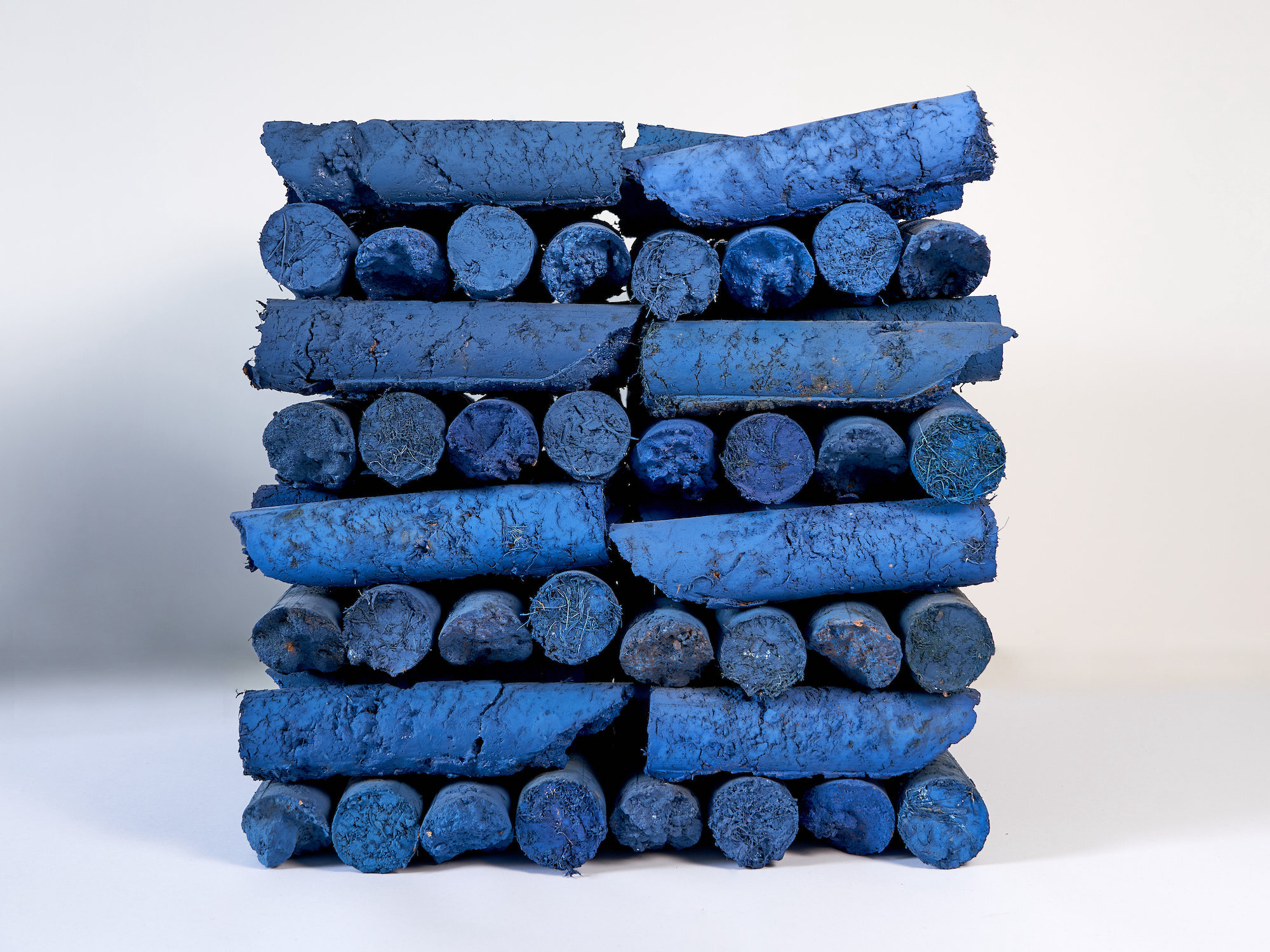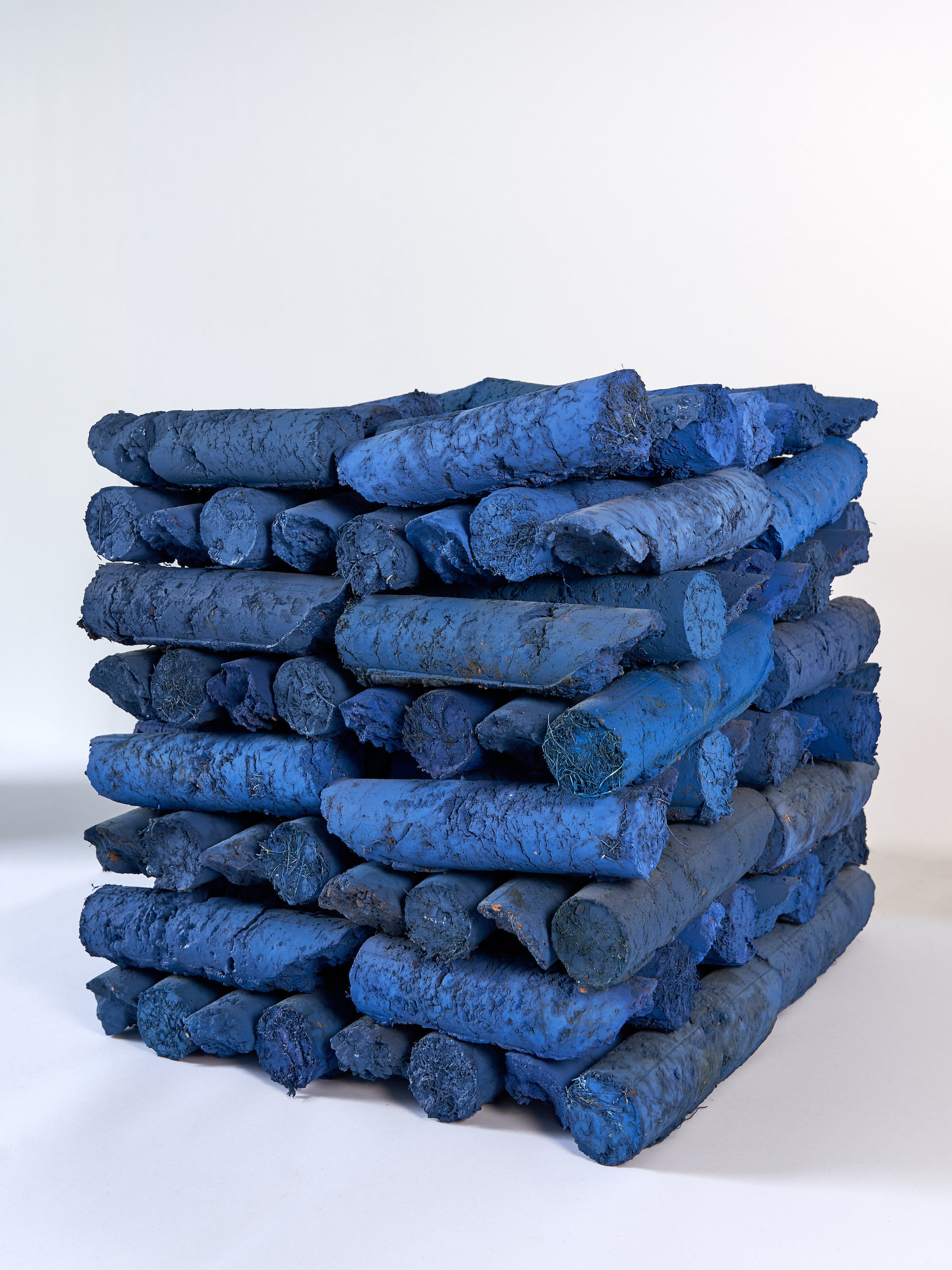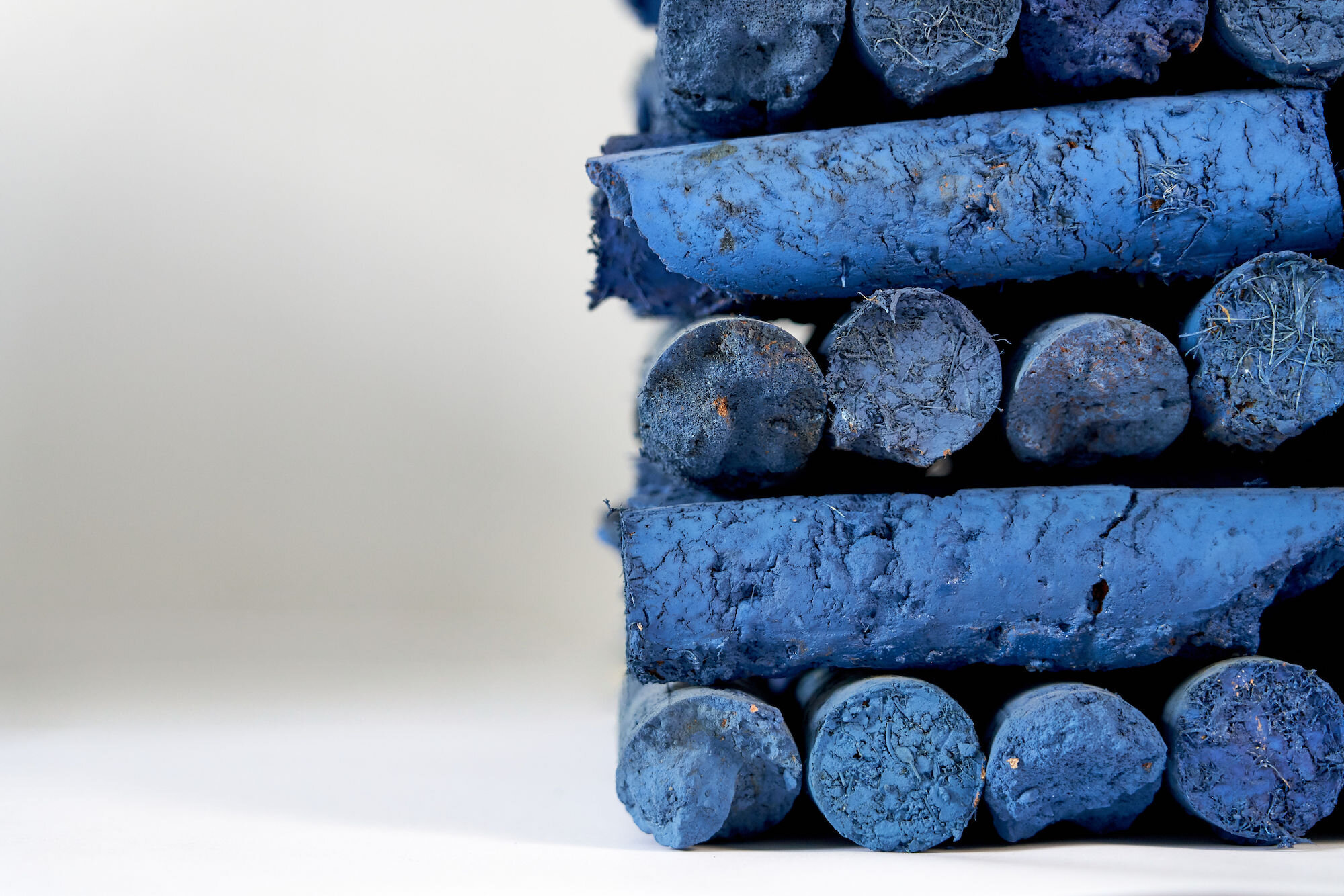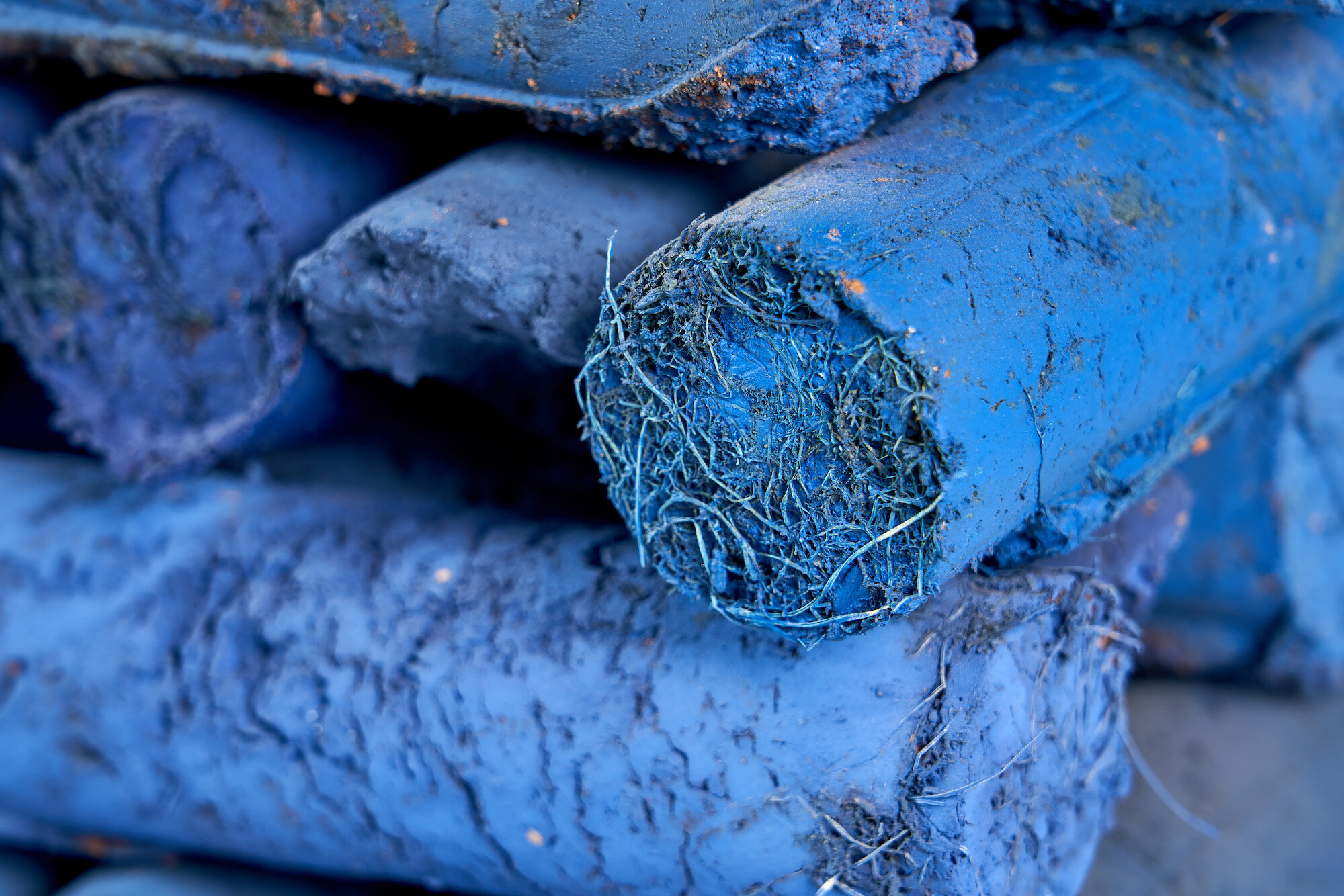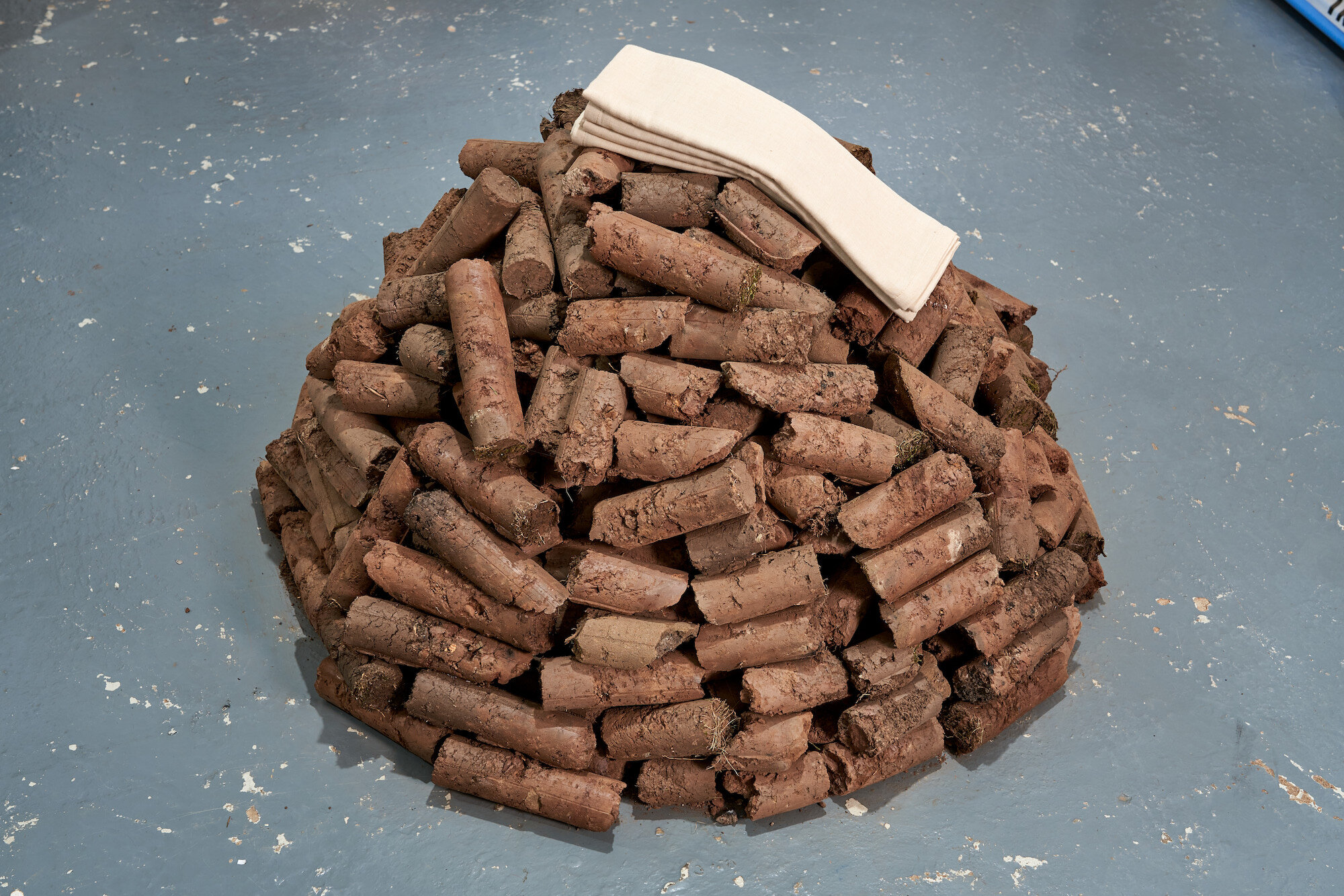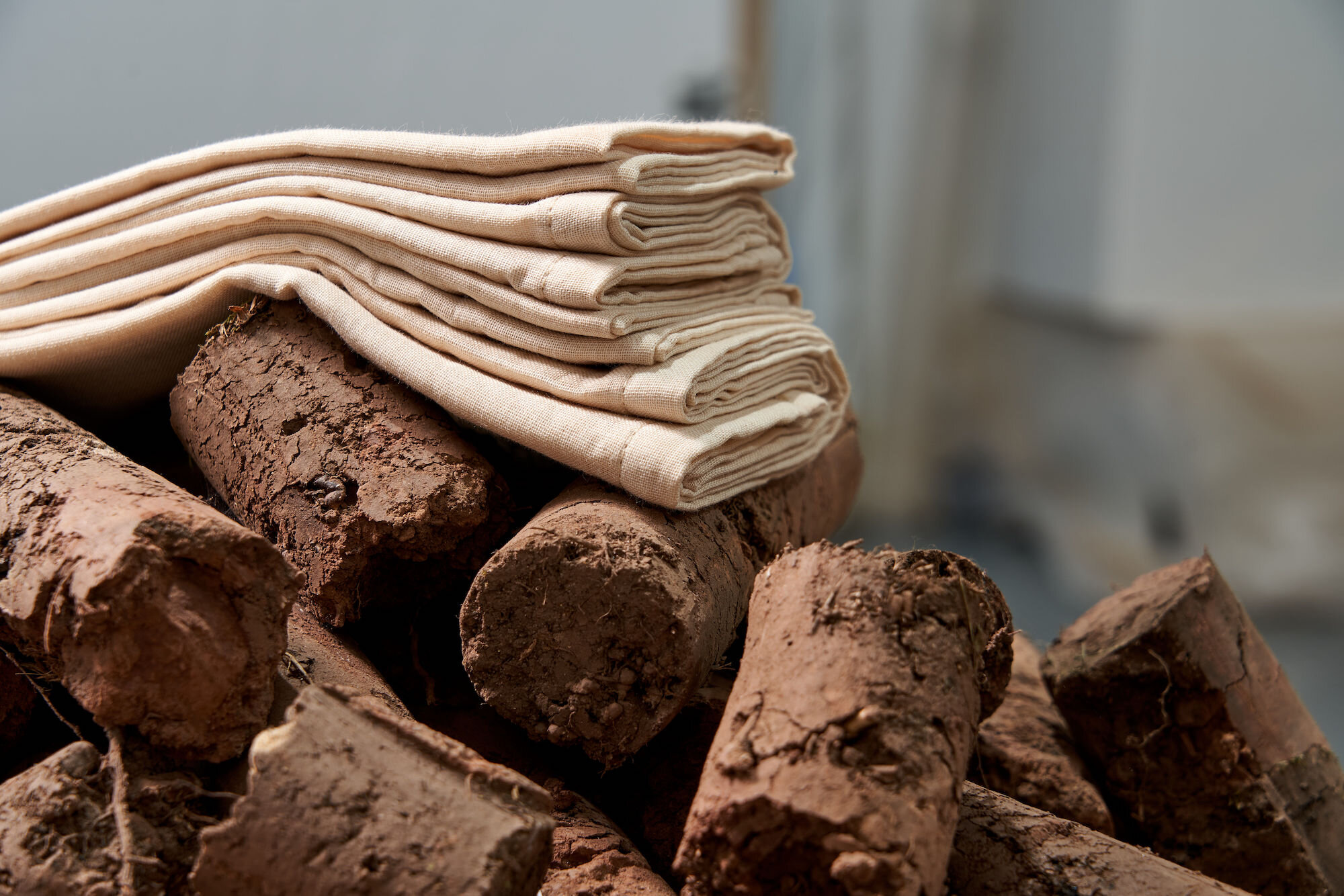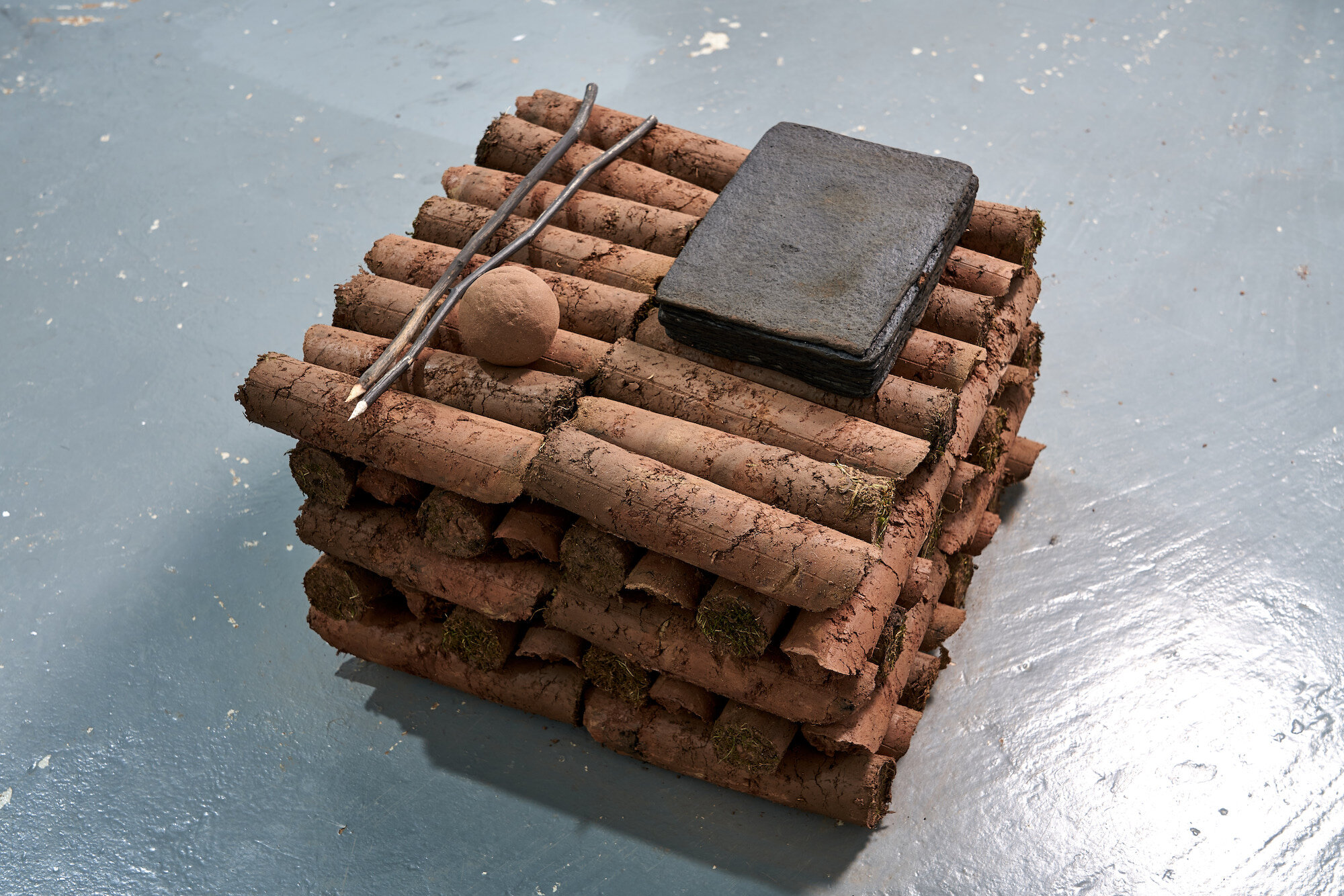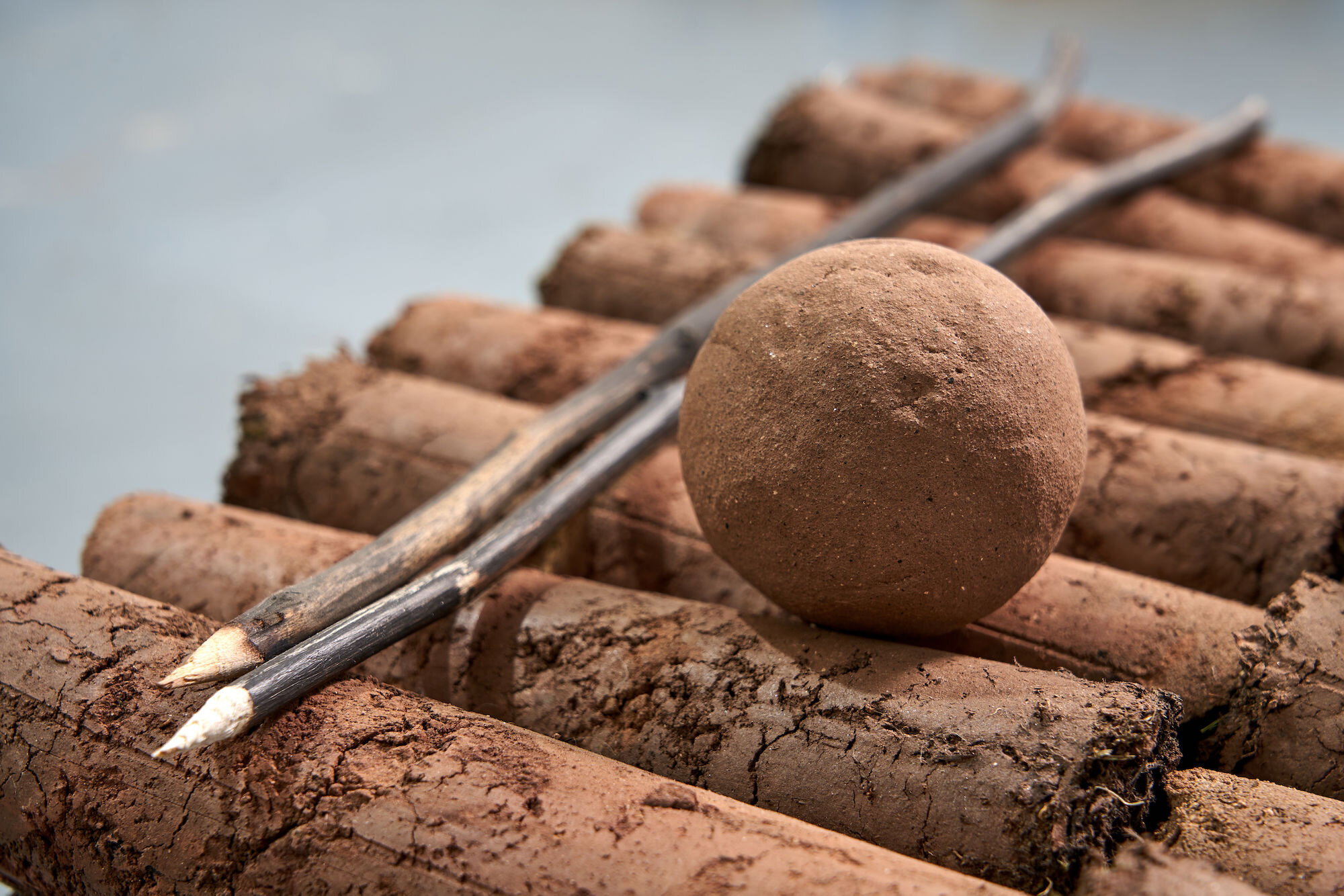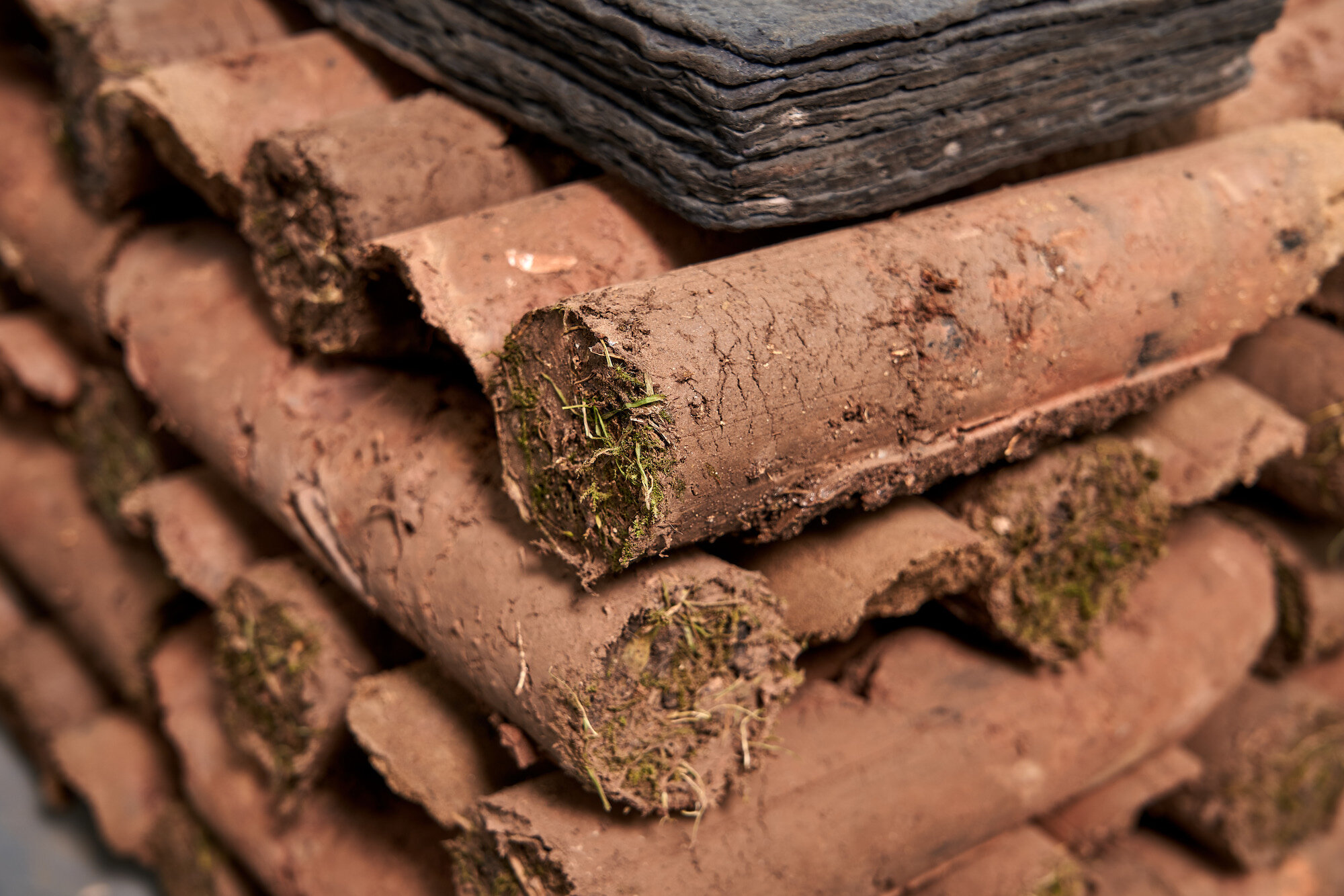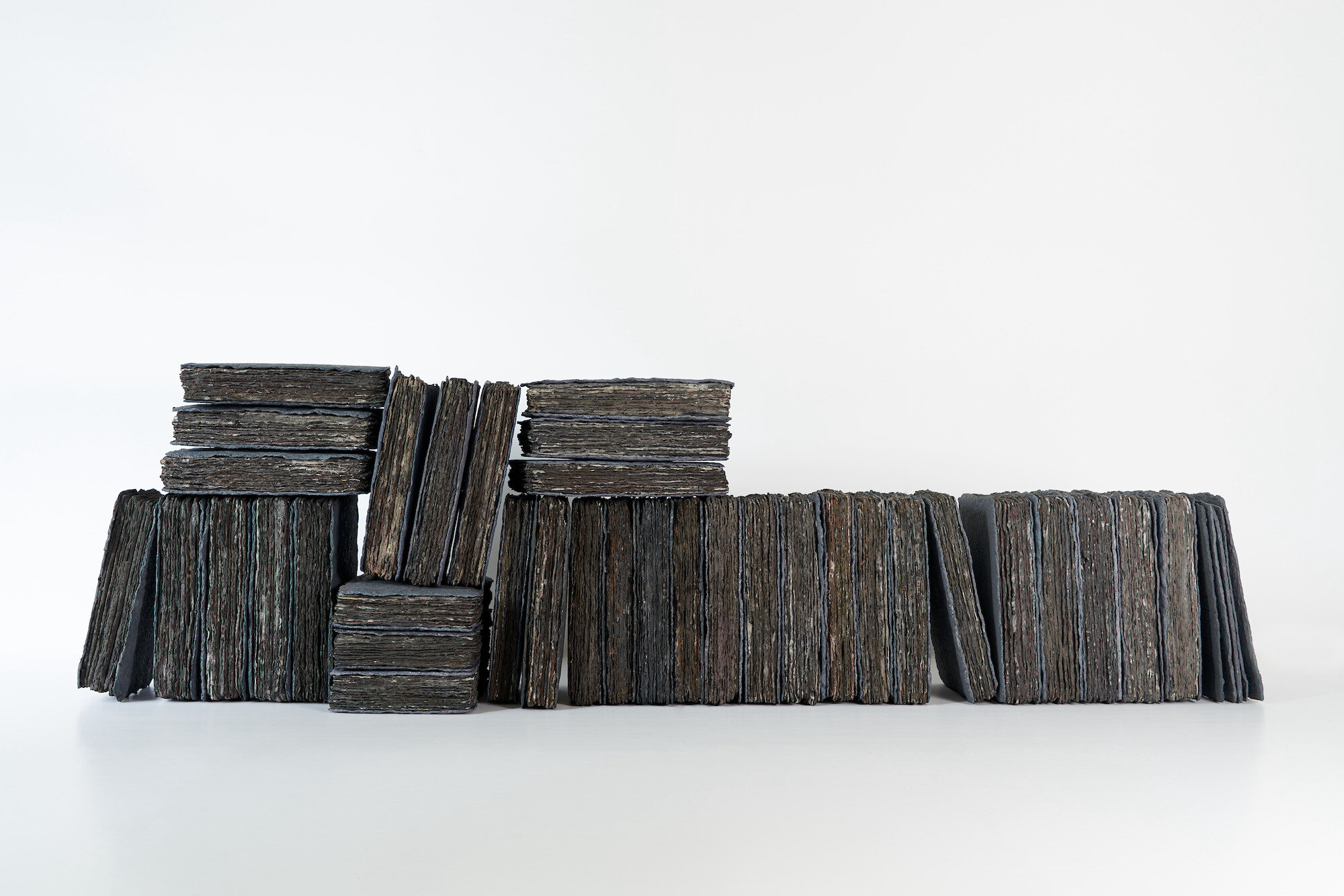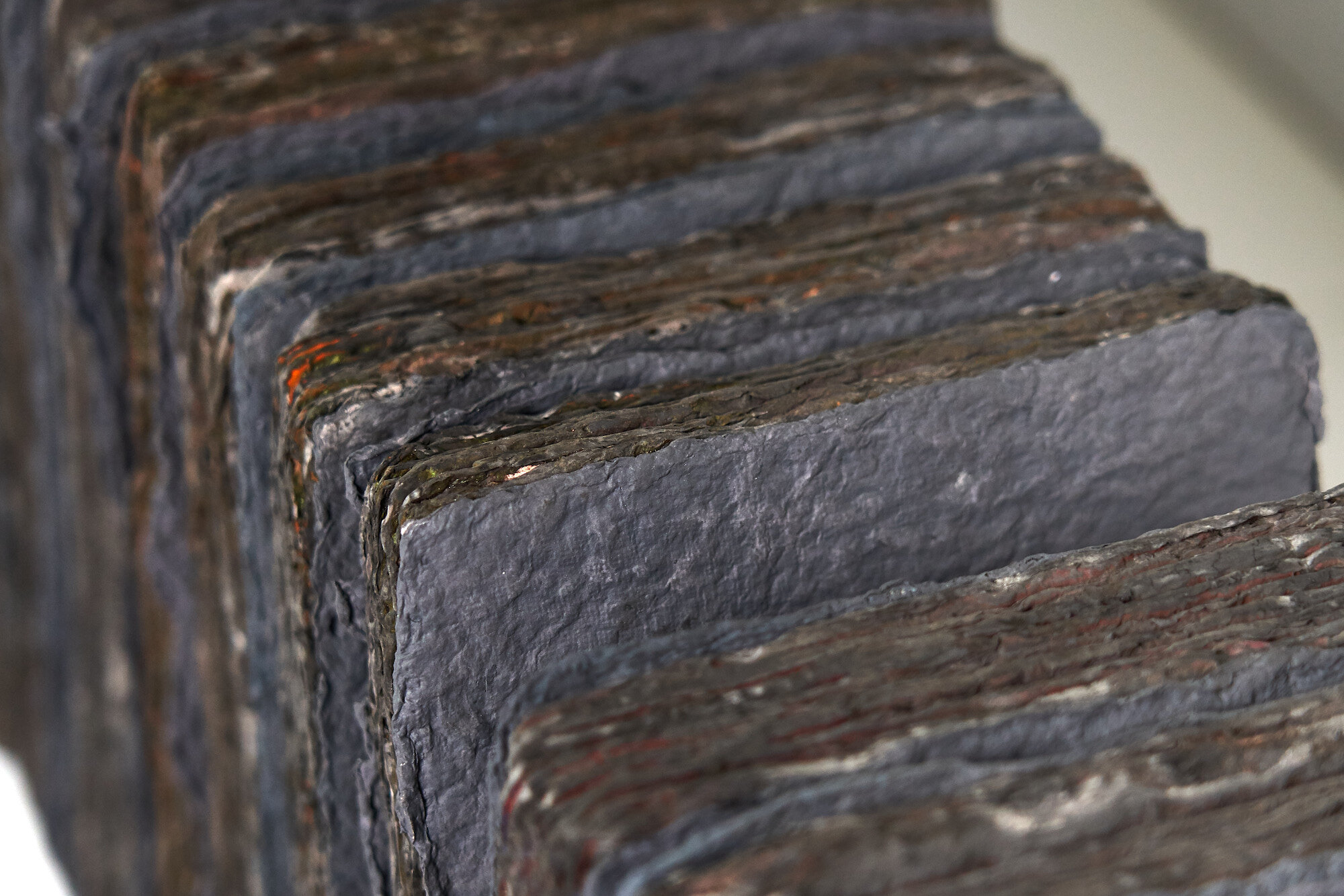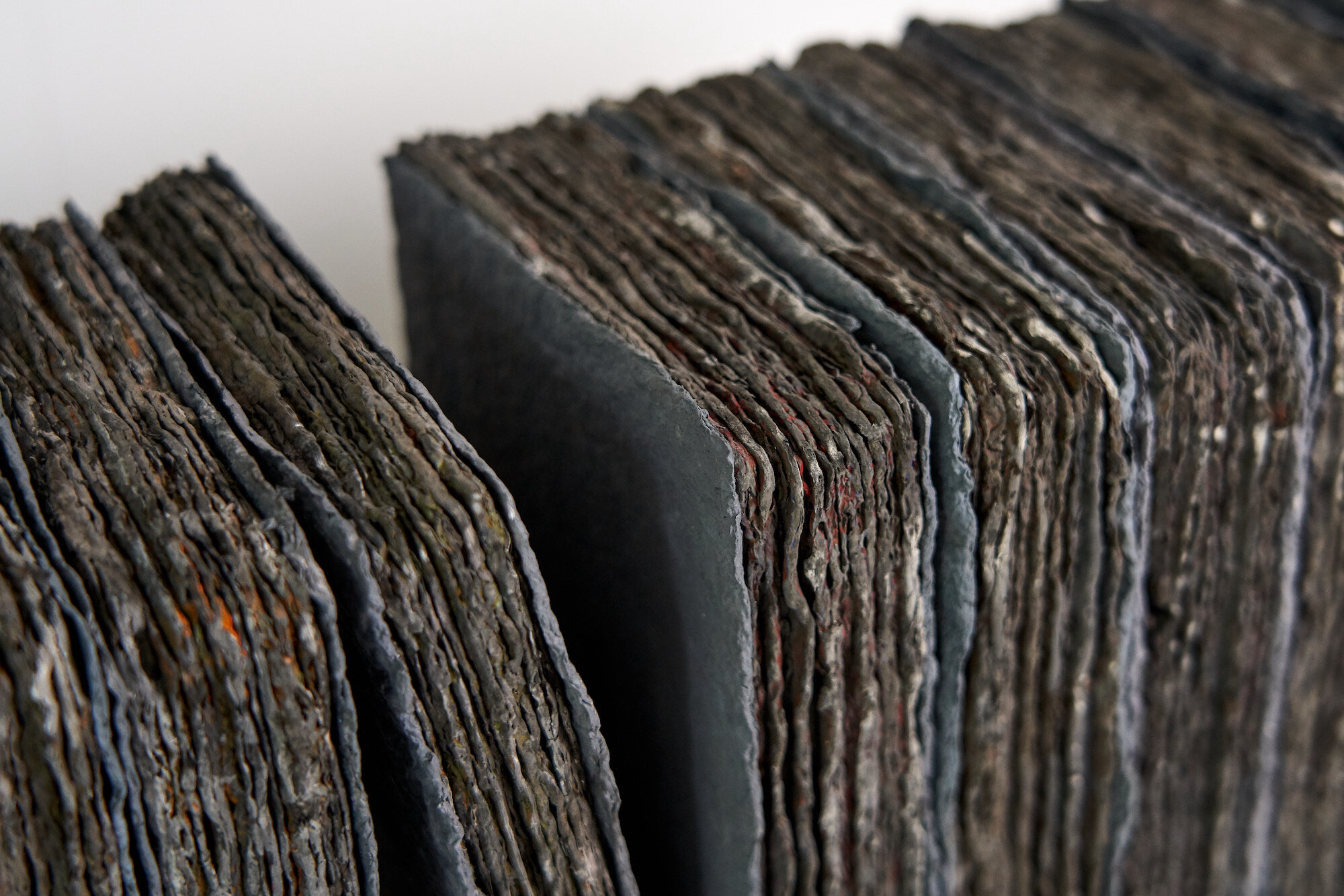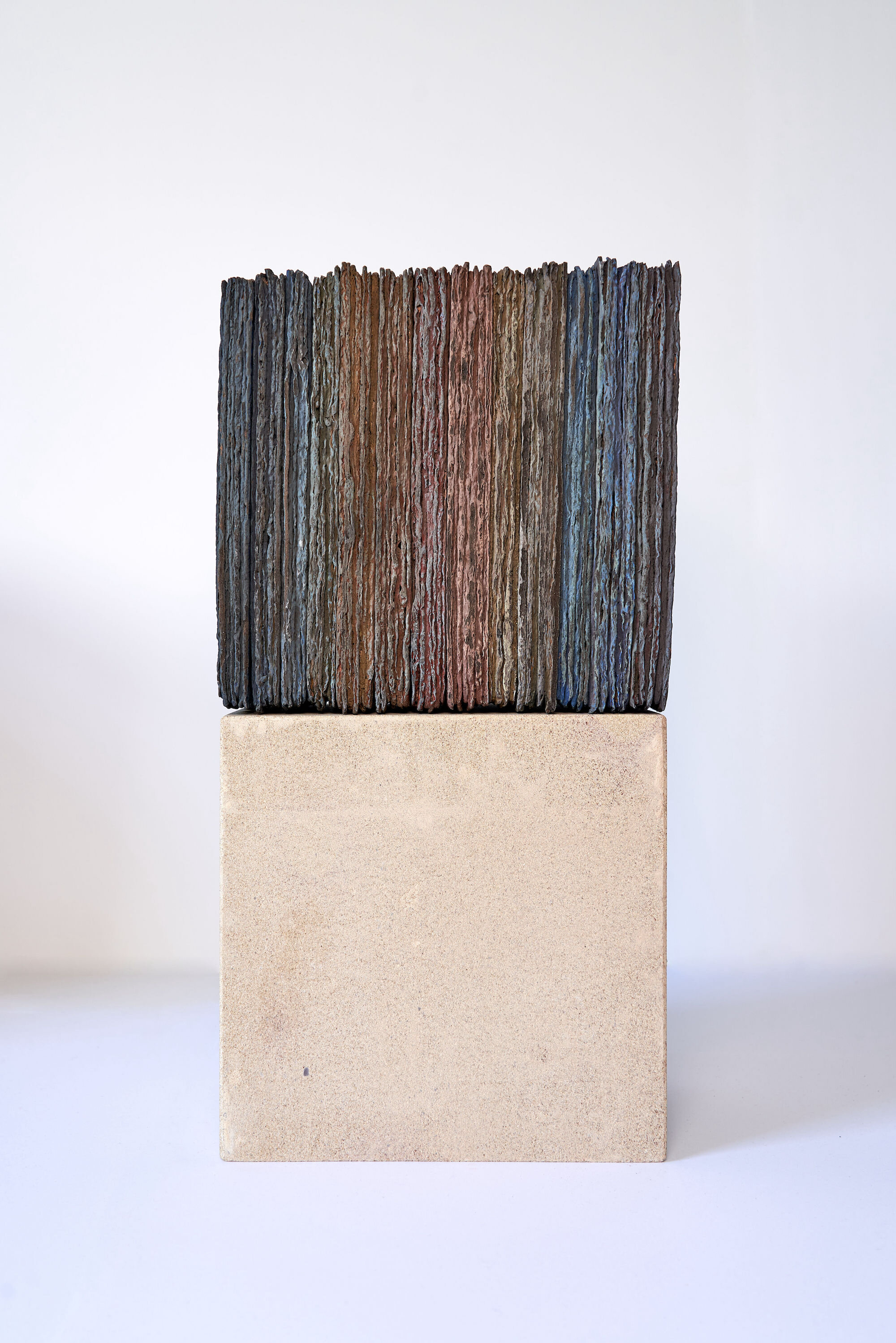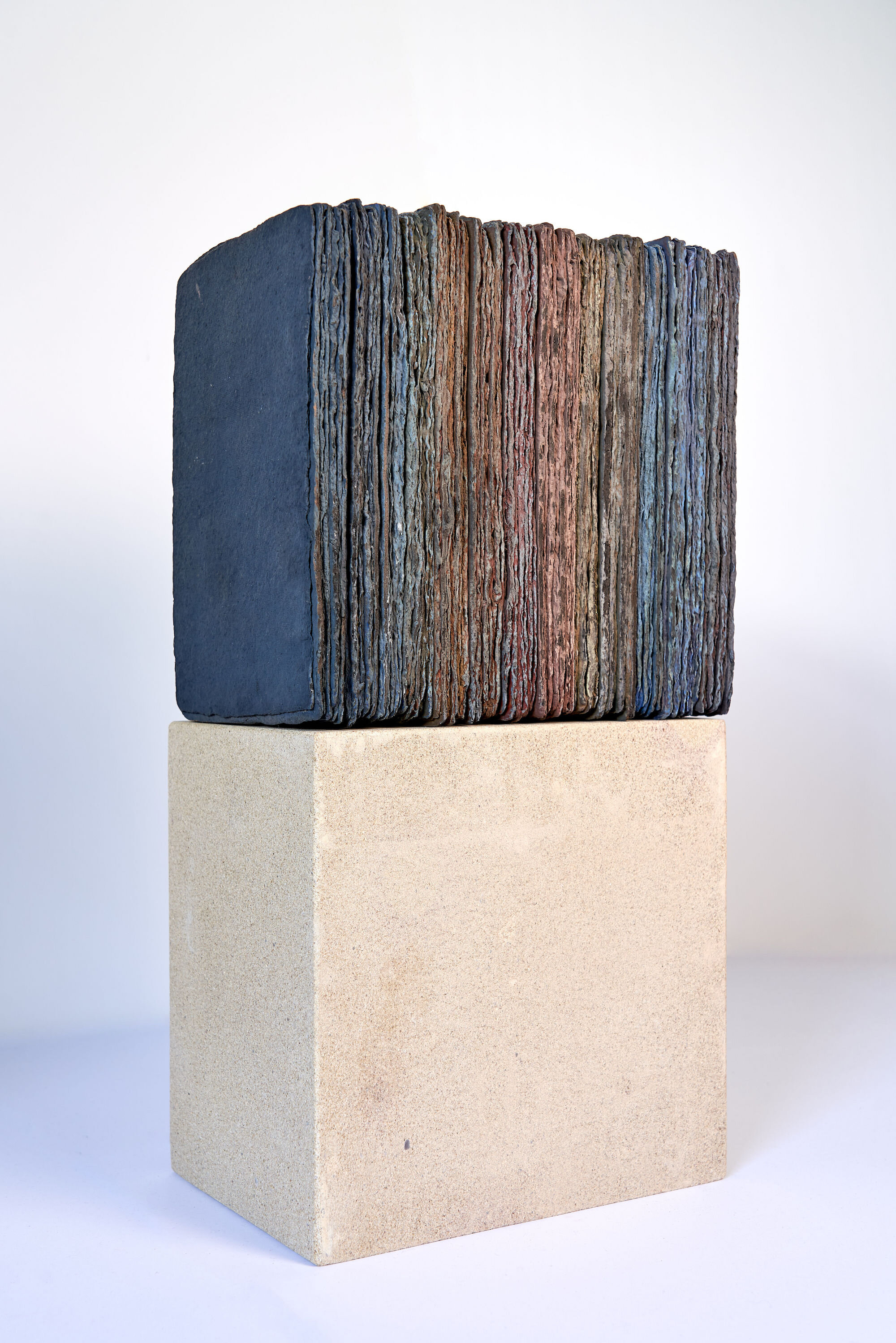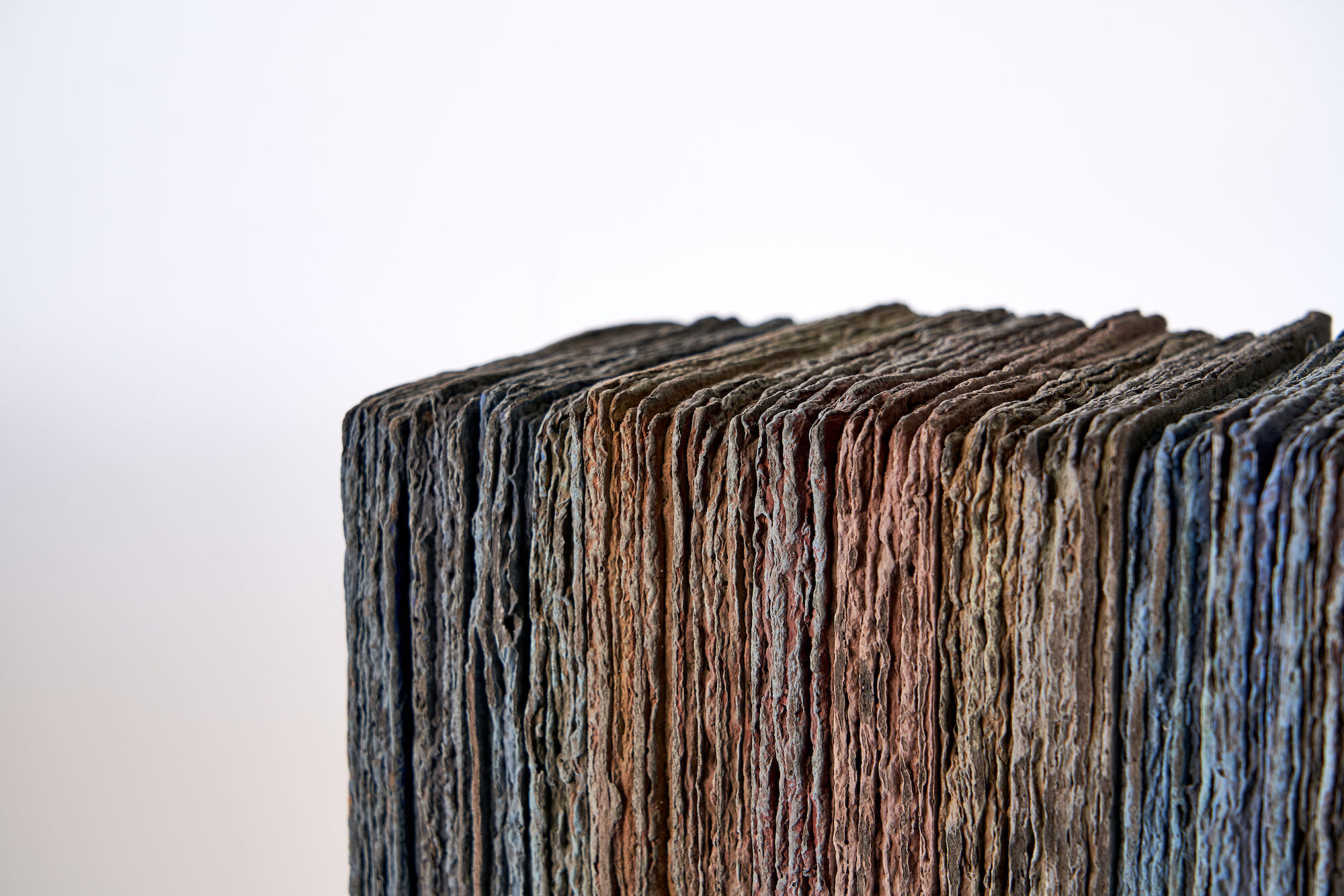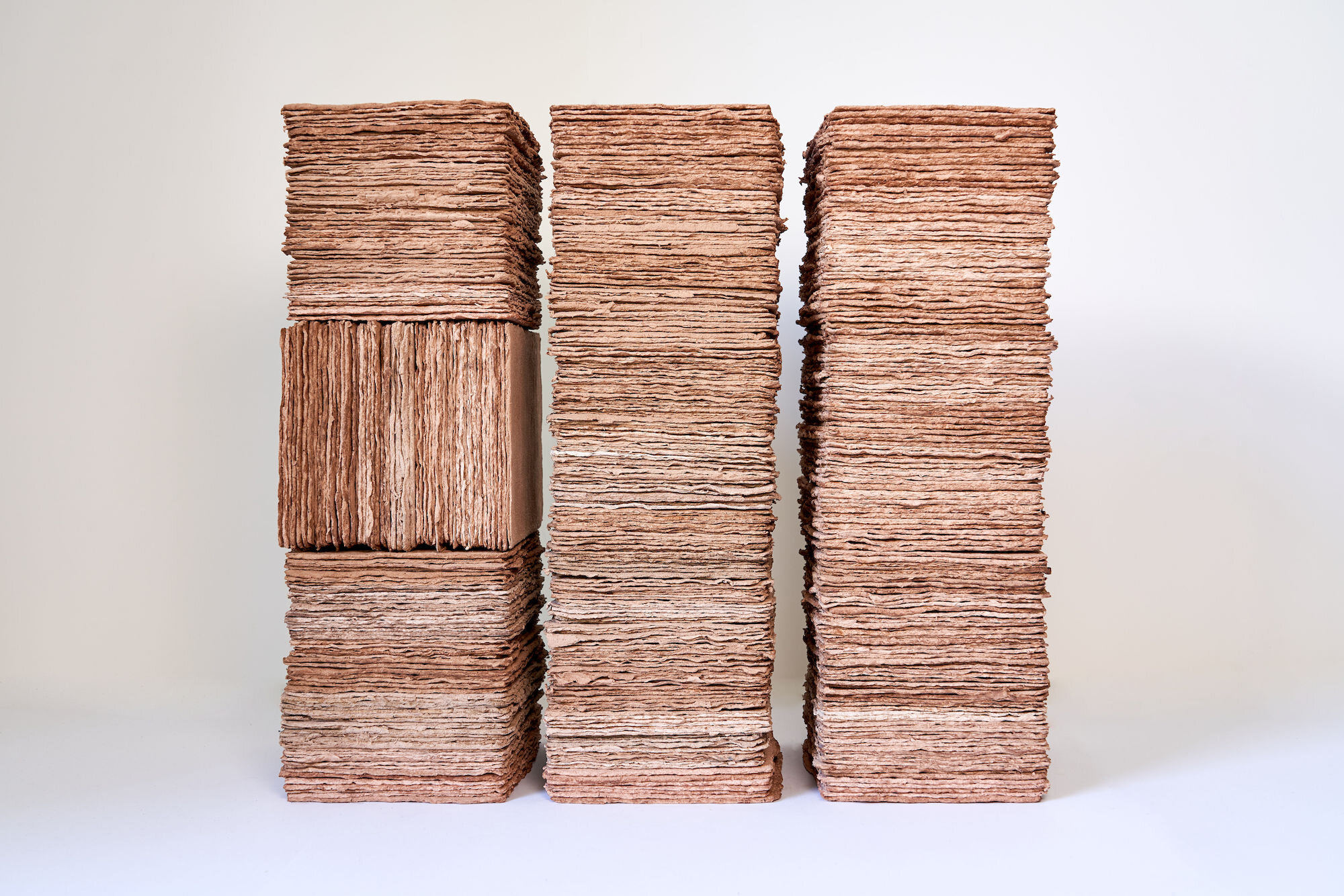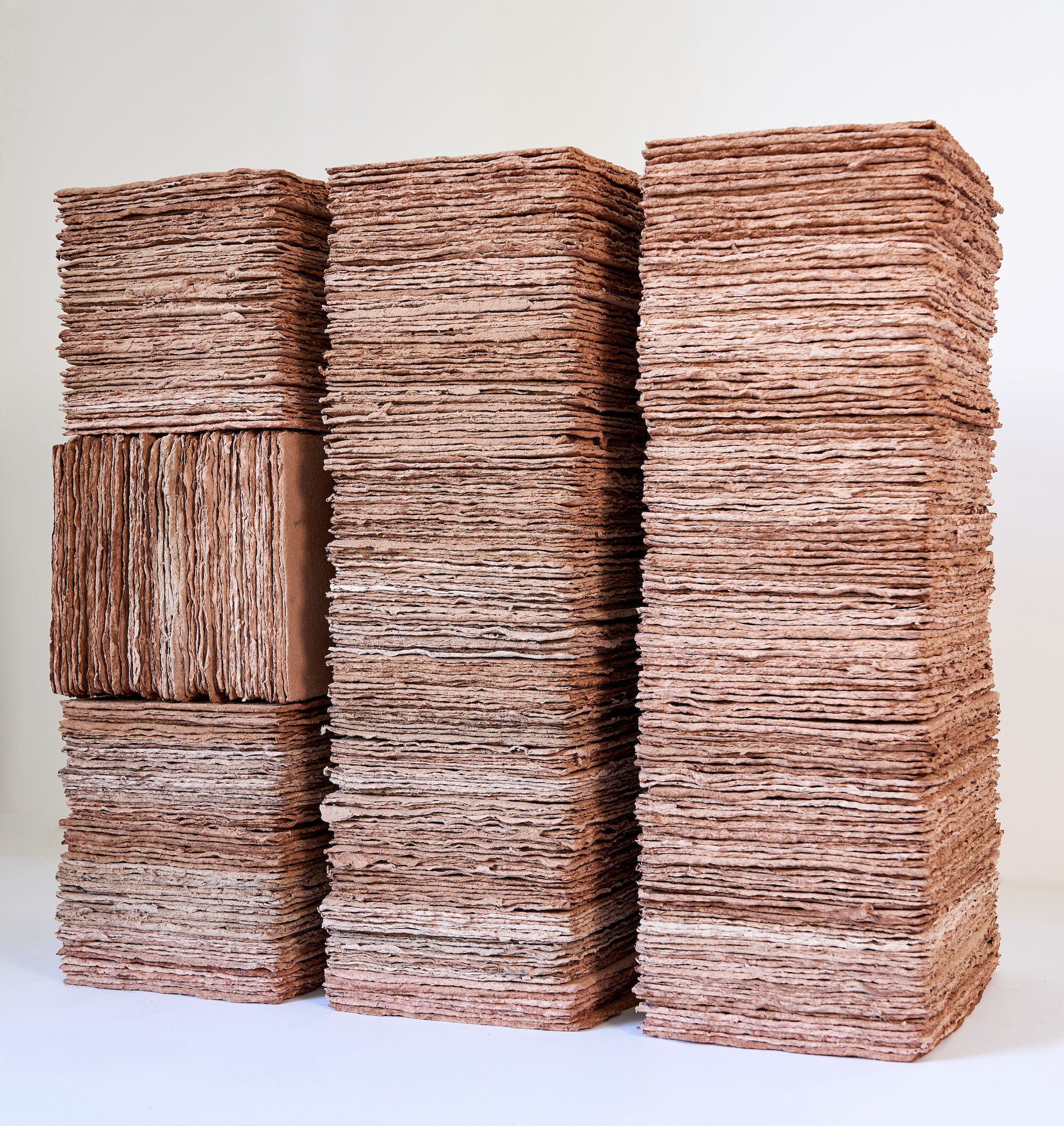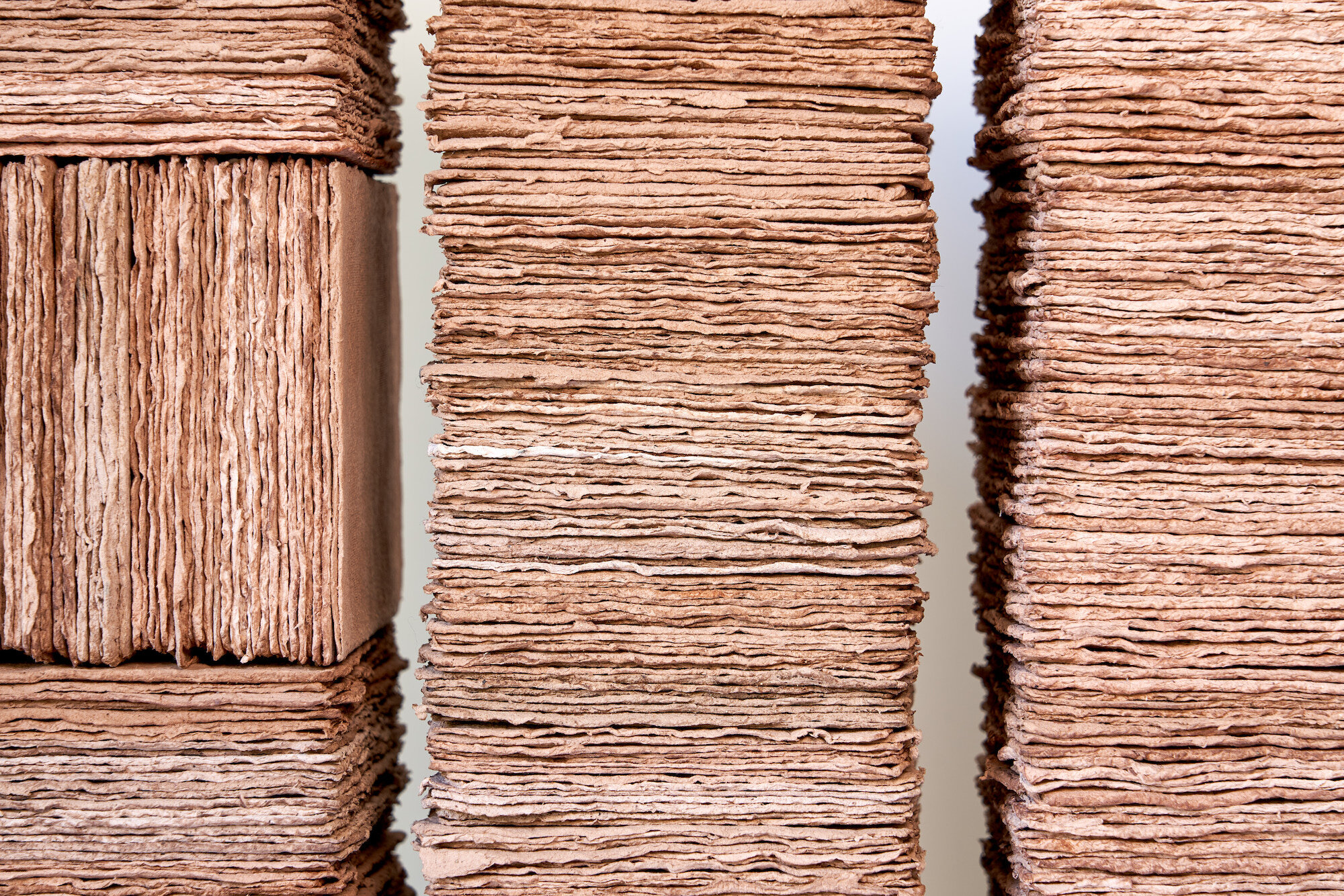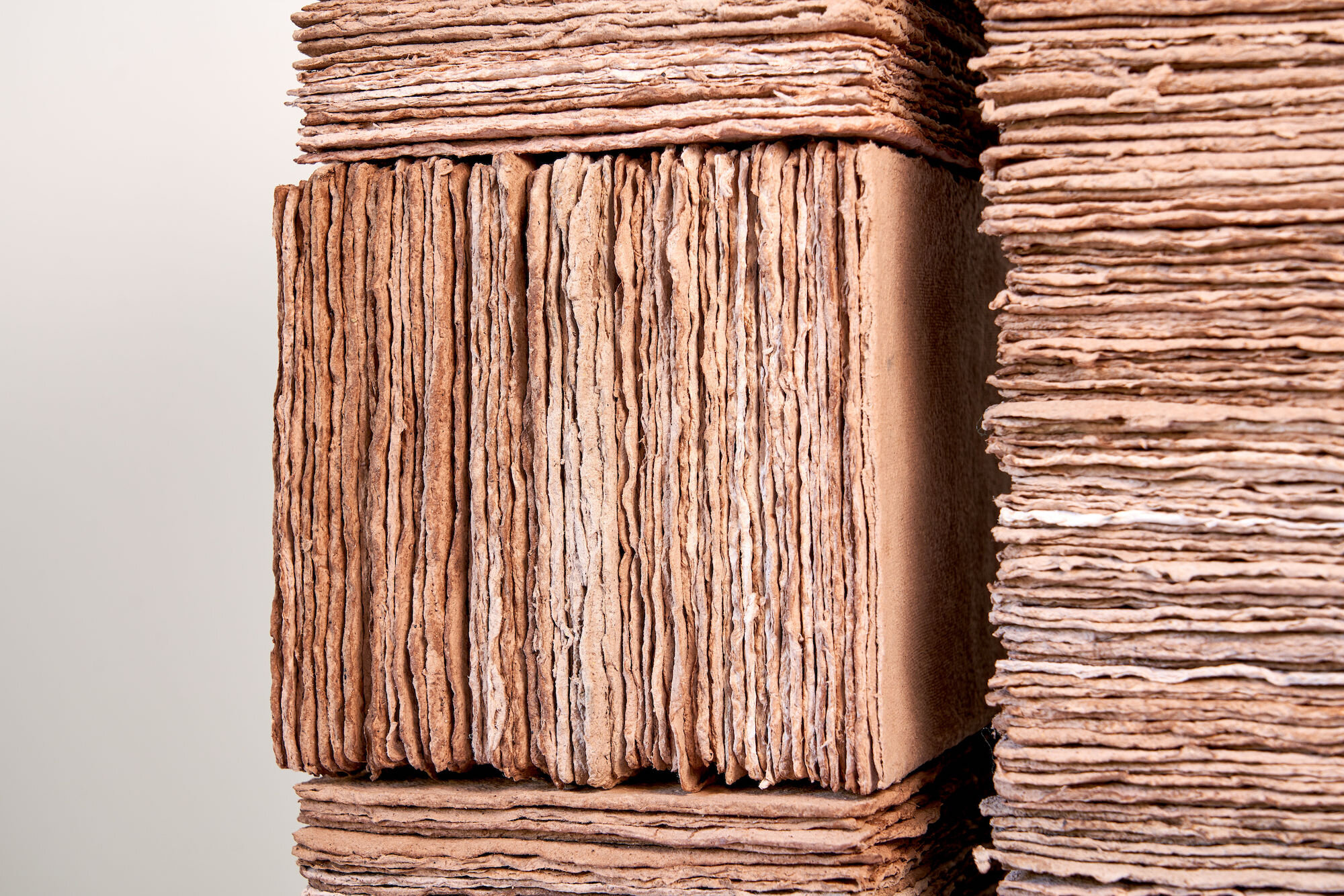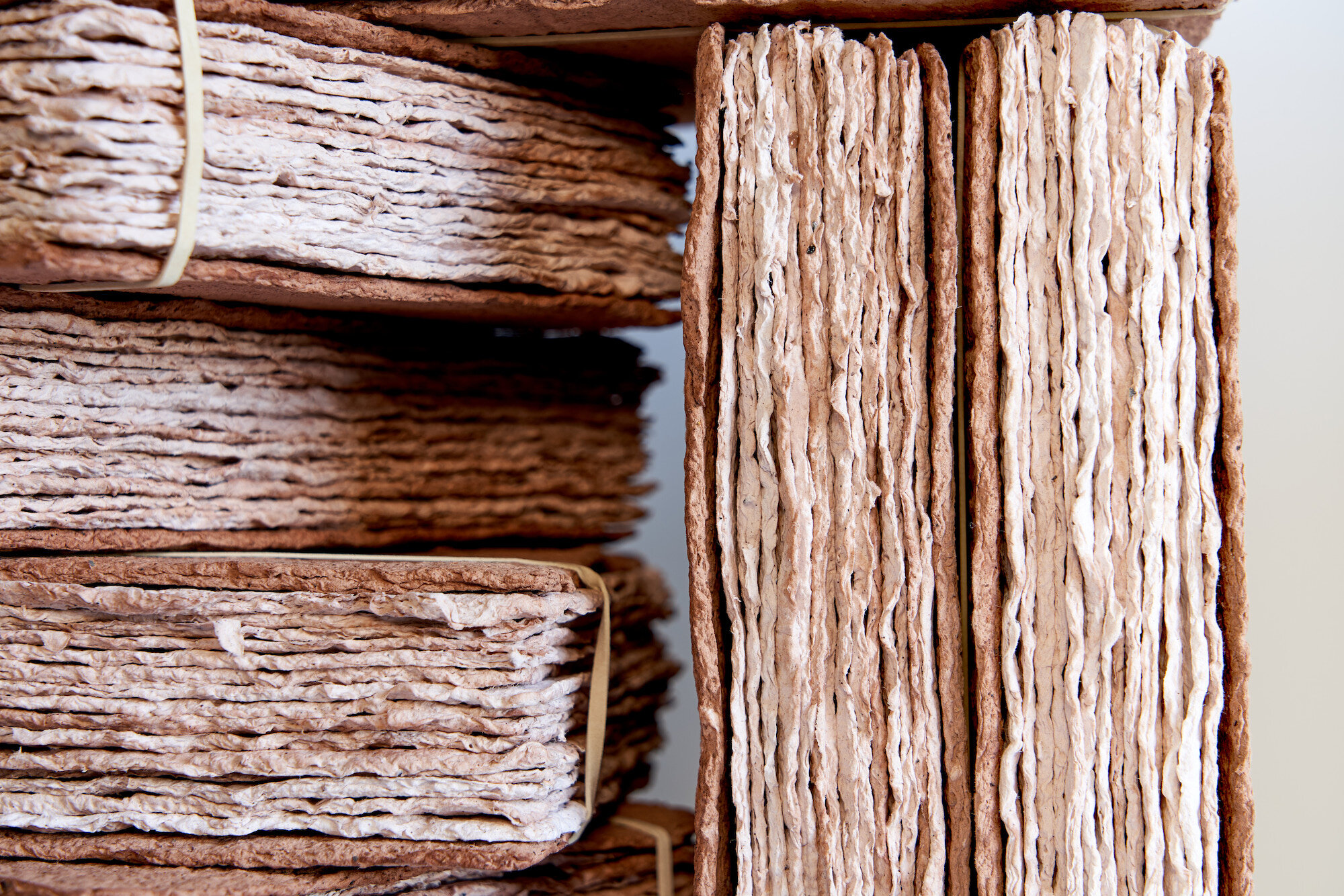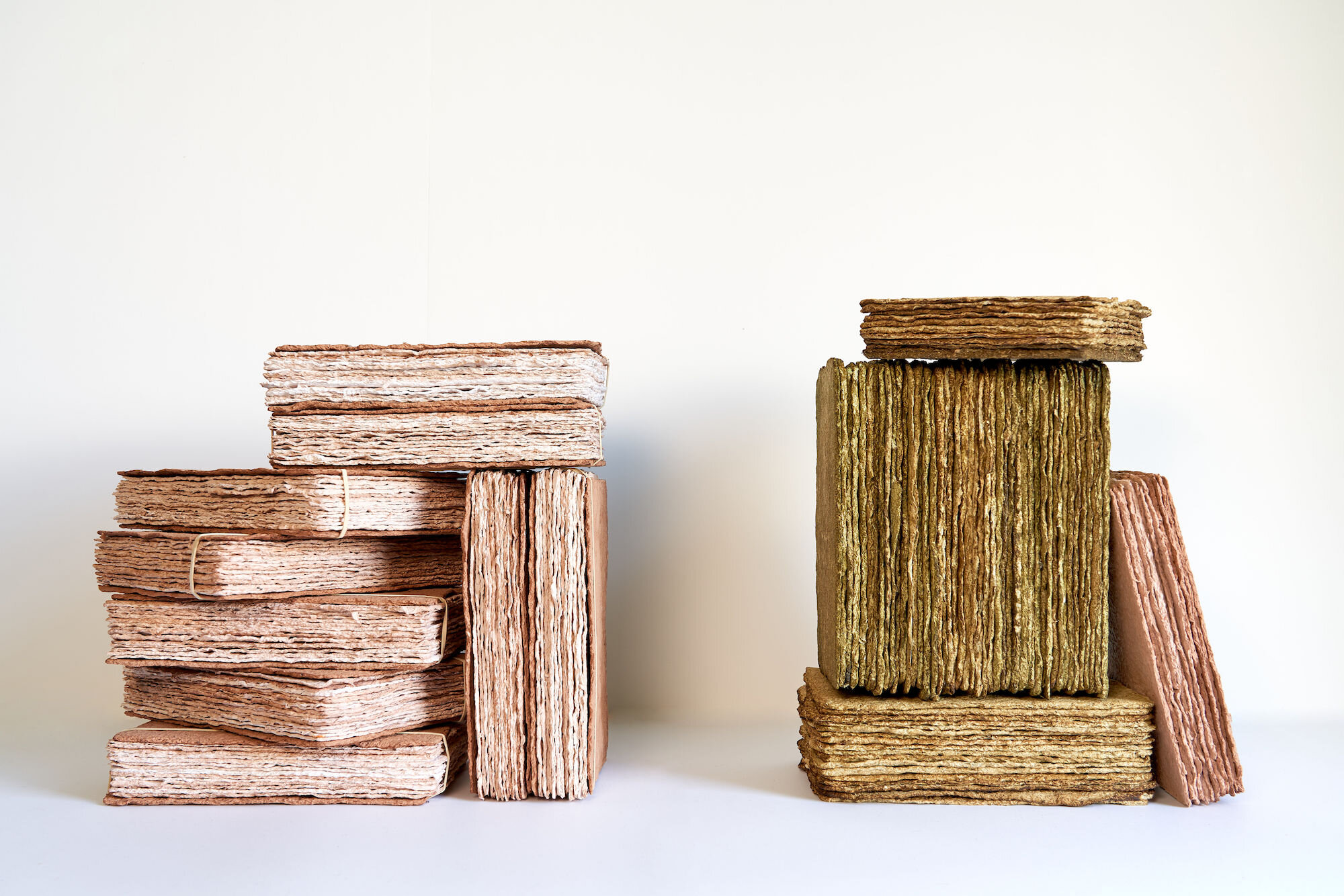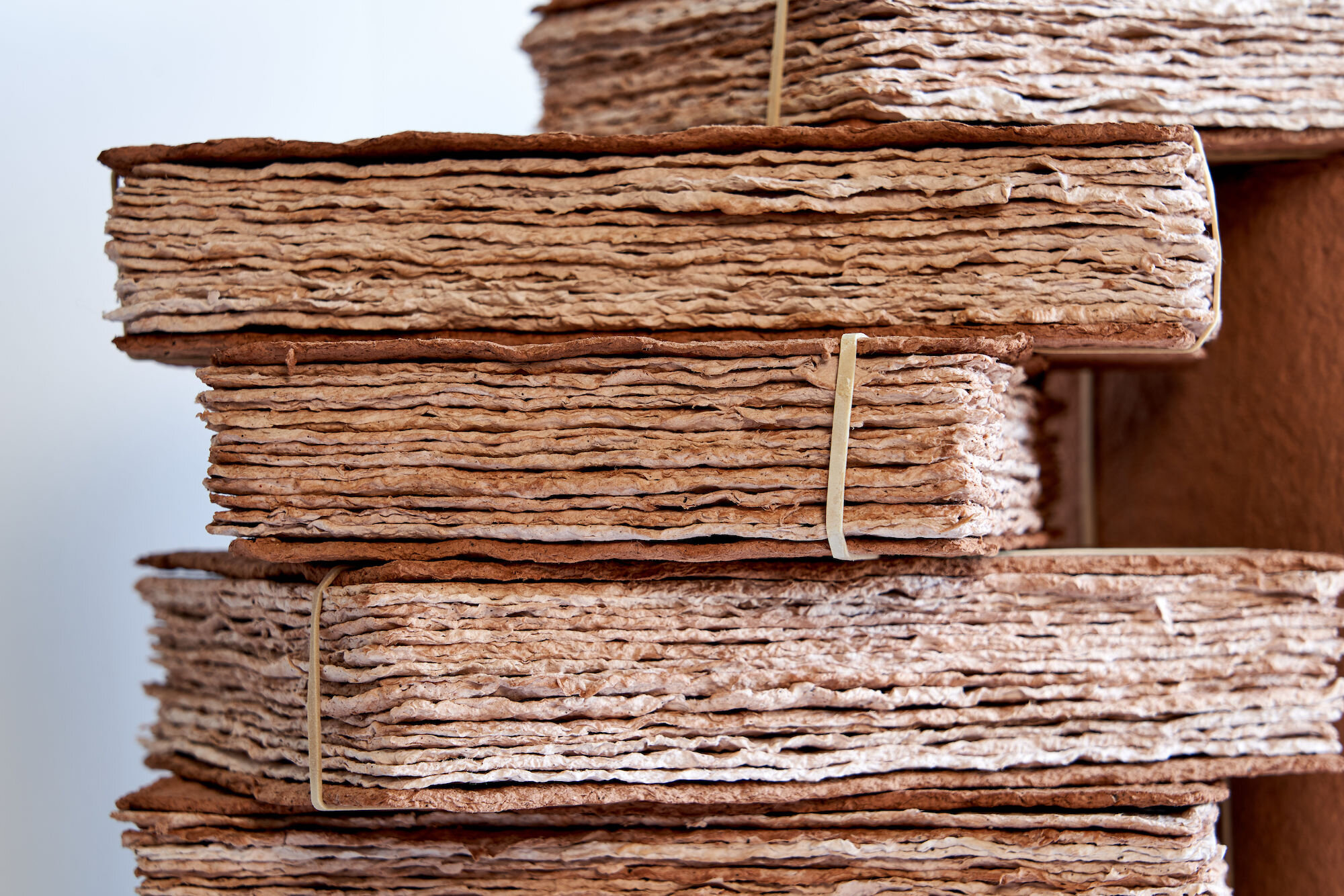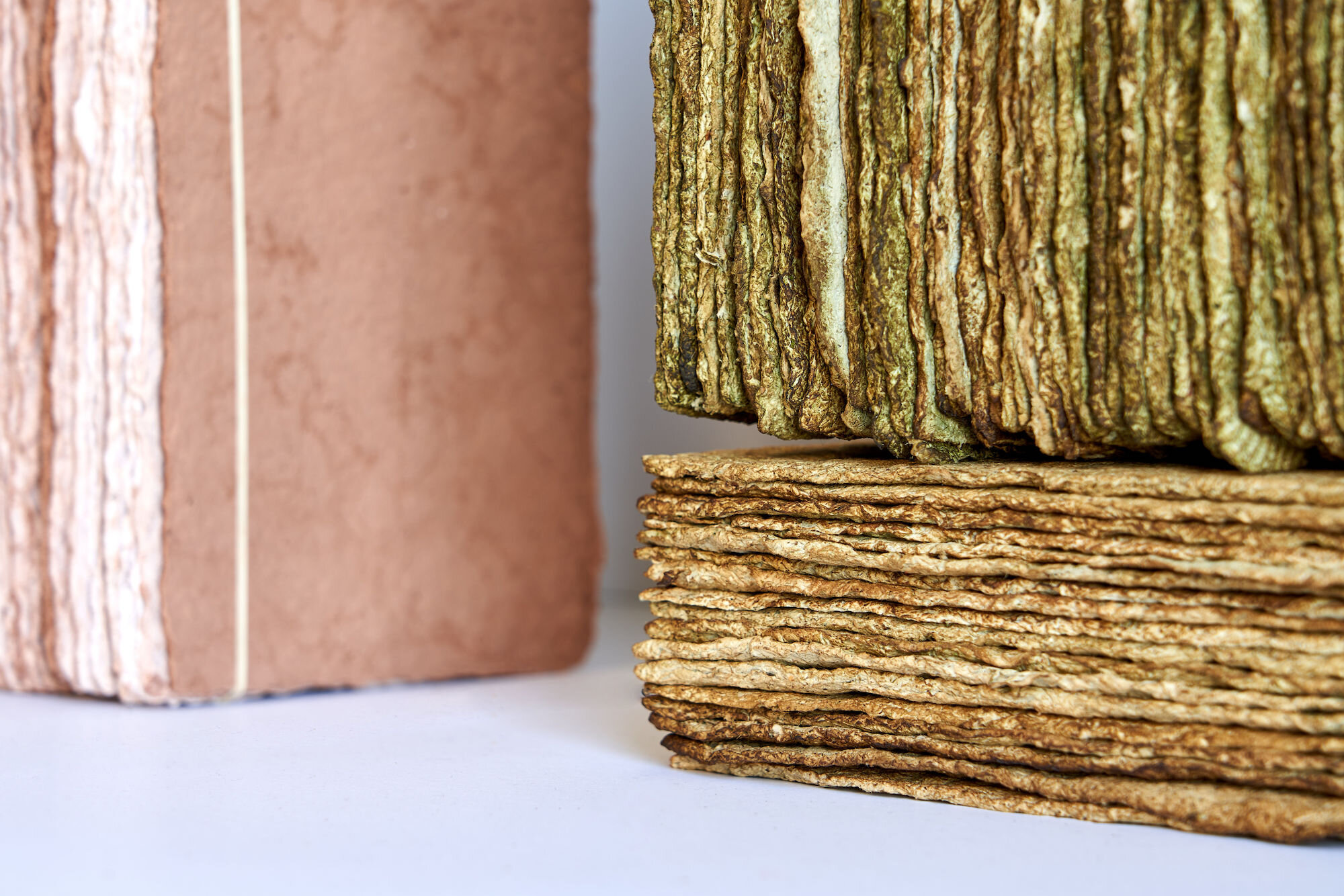Online Exhibition – John Newling in the Studio
In this online exhibition we present a series of new works and a short essay by the artist that continues his exploration of ecology working with soil as a medium.
Night Sky Over Soil, 2020128 soil cores and water-based pigment, h.40 x w.40 x d.40 cmMound: Surrender to The Earth, 2021
Soil cores, muslin, sticks, h.57 x w.97 x d.97 cm‘I have long been absorbed by the thought that under our feet is soil of such complexity that we have yet to understand all the effect and affects of the earth; it is a material that carries a language in and through nature.’
School, 2020
Soil cores, sticks, soil ball and book
h 30 cm x w 43 cm x d 43 cm
‘The cores themselves have a beauty to them, each being slightly different in structure and composition. They are like maps of a slow evolution over time and through space.‘
Night Books, 2021Coal dust, crushed charcoal and texth 39 cm x w 127 cm x d 27 cmSoil Block, 2020
Soil, sandstone, pigment
h 42 cm x w 21 cm x d 15 cmFlag, 2021Soil and texth 45 cm x w 49 cm x d 21cmSoil Books, 2021 (left)
Soil and text
h 30 cm x w 37 cm x d 27 cmLawn Books, 2021 (right)
Grass cuttings and text
h 32 cm x w 18 cm x d 27 cmNew works - 2020 / 2021
Essay by John Newling
In May 2020 I purchased a manual soil corer. Such tools are used widely to take soil samples at differing depths for analysis and research work. I have long been absorbed by the thought that under our feet is soil of such complexity that we have yet to understand all the effect and affects of the earth; it is a material that carries a language in and through nature.
I found I could take core samples up to a depth of 150 cm. Many of the new works began from the cores that were collected from the garden. In all, I collected some 500 cores. Each core was left to dry completely, for around 4 weeks. The cores became a material to study and work from. I wanted, in a way, to draw out the language from them through study and material investigations. We live in a world of many forms of communication that we have yet to translate. I believe we will not be fully be connected to the earth until we are better able to join in these conversations. Many of the works are forms and materials that seek to make work that is a co-relationship with me and the soil from my garden; a collaboration of languages.
The cores themselves had a beauty to them, each being slightly different in structure and composition. They were like maps of a slow evolution over time and through space. They probably held memories of works I had done in the same soils over several decades.
I was working in a studio space that is at the same level as the garden and was constantly moving between the two spaces. Initially I worked with the cores as elements of a work, simply drying and stacking them into a mound that, for me, held all the languages; a kind of library or archive of an essential material. The studio became a laboratory of working with the soils. Once dried I crushed and filtered some of the cores. I removed the small stones and filtered again and again until I had this fine pigment or powder that was the soil. It was from this material transformation that many of the works evolved.
Night Sky over Soil happened when I realised that the dried soil cores had different absorbency rates. I wanted to bring the sky into the soil, a desire to collapse sky and earth together, and simply dipped the cores in blue pigment and allowed them too dry for several weeks. What happened was that each of the 128 cores became many differing shades of blue as the absorbency of each core mapped its own structure in blue. Other ‘sky cores’ were returned to the spaces where they came from; the sky in the soil.
I think it was the idea of a library or school room, an installation that may link each work, that saw me begin to experiment with mixing the soil with text to create pages of the forms. Map, one of first works in this generation, was constructed by casting some 697 casts. The soil mixed with shredded text from my newspaper work ‘common values’. I wanted to make a flag that was from the earth; a flag not of any nation. Each cast was slightly different in colour and texture as the ratio between text and soil varied.
Soil Block was also being built at the same time in my studio. It consists of many layers of soil/text sheets each treated in pigments that reflect the colours I saw over the space of one day; dawn through dusk. The resultant block sits on a block of sandstone cut to the exact dimension of the soil block. The sandstone is mined locally and is the same stone that runs underneath the garden.
Soil books was produced in the same manner with a mix of filtered soil from the cores and text, Each book cover is made from the crushed pigment from the stones I had filtered. The very distinct pink colour comes from these small stones. Each stone could be 500 million years in age, perhaps older. It is true to say that during this sustained period of making I was continuously thinking about time, place, transformation, languages and the fragility of us.
The Lawn Books sculpture came from above the soil; the surface of the garden. The work evolved out of the grass cutting made of the first lawn mowing of the year. The cuttings were put through a bullet mixer and the resultant liquid was mixed with text from my newspaper ‘From my garden’.
The Night Books consists of 576 casts formed from mixing text, coal powder and crushed charcoal. Each of the 36 books were constructed and then burnt on its edge. The Night Books happened, in part as a desire to make a work that reflected my sense of the last months of lock downs; a fearful sleep. Each of the 36 elements consists of coal dust, crushed charcoal and text.
I wanted to make a work that contains carbon that is partially released in its making so each work was burnt along its edges. The work is a structure that resonates as a book stack that holds a kind of geology of the earth that we have added to in way that could be the end of our species. It is a midnight work; ghosts of a human geology.
All the new works are seen as autonomous sculptures but they are intimately linked to each other. My hope is to show them together as an installation under a generic title that is yet to determined.
Inquire about this work
Contact director Jonathan Casciani for more information

